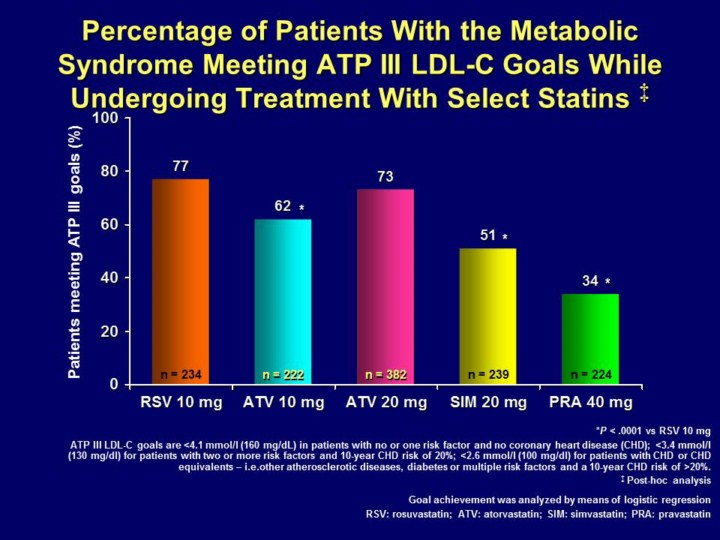| front |1 |2 |3 |4 |5 |6 |7 |8 |9 |10 |11 |12 |13 |14 |15 |16 |17 |18 |19 |20 |21 |22 |23 |24 |25 |26 |27 |28 |29 |30 |31 |32 |33 |34 |35 |36 |37 |38 |39 |40 |41 |42 |43 |44 |45 |46 |47 |48 |49 |50 |51 |52 |53 |54 |55 |review |
 |
The percentage of patients with Metabolic Syndrome meeting National Cholesterol Education Program Adult Treatment Panel III (ATP III) LDL-C goals, using the patients included in the MERCURY I trial, according to treatment with rosuvastatin, atorvastatin, simvastatin, or pravastatin are displayed on the current slide.
At 8 weeks, the percentages of patients with Metabolic Syndrome who reached ATP III LDL-C goals was greater in the rosuvastatin 10mg group than in the atorvastatin 10mg, simvastatin 20mg or pravastatin 40mg groups.1
Reference: 1. Stender S. Comparison of rosuvastatin with atorvastatin, simvastatin and pravastatin in achieving cholesterol goals and improving plasma lipids in hypercholesterolaemic patients with or without the metabolic syndrome in the MERCURY I trial. Diabetes, Obesity and Metabolism. 2005;7:430–438.
|